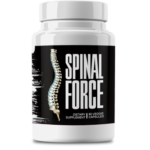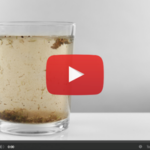This Village-Made Chinese Pain Reliever Eliminates Back And Joint Pain!
Surprising Herbs for Joint Pain You Overlooked

Herbs for Joint Pain: Nature’s Answer to Aching Joints
If you're one of the millions struggling with joint pain—whether from arthritis, an old injury, or just daily wear and tear—you’ve probably tried everything from painkillers to physical therapy. But what if nature already had some of the best solutions? Herbs for joint pain have been used for centuries in traditional medicine, and modern science is finally catching up to their benefits. They offer gentle, long-term relief without the harsh side effects of many pharmaceuticals.
Why More People Are Choosing Natural Joint Pain Relief
Let’s face it: popping pills isn’t always the best solution. NSAIDs can wreak havoc on your stomach, and opioids come with serious risks. That’s why so many are turning to herbs—they not only ease discomfort but often come with bonus perks like better digestion and reduced inflammation. It’s like getting a two-for-one deal for your health.
How Herbs Tackle Joint Pain at the Source
Unlike painkillers that just mask symptoms, herbs for joint pain go straight to the root of the problem. Take turmeric and ginger, for example. They’re packed with anti-inflammatory compounds that block pain pathways, boost circulation, and even help repair cartilage. It’s like giving your joints a much-needed tune-up.
Underrated Herbs for Joint Pain You’re Probably Missing
Sure, turmeric gets all the headlines, but there are some lesser-known herbs that deserve a spot in your pain-relief toolkit. Here are three you should know about.
Turmeric: The Golden Hero for Inflammation
Turmeric’s secret weapon is curcumin, a powerhouse compound that studies show can reduce swelling as effectively as some prescription meds. Pro tip: pair it with black pepper or a healthy fat (like coconut oil) to help your body absorb it better.
Boswellia: The Ancient Joint Protector
This Ayurvedic staple, also called Indian frankincense, contains boswellic acids—nature’s answer to inflammatory enzymes. It’s been a game-changer for people with osteoarthritis and rheumatoid arthritis.
Ginger: Not Just for Upset Stomachs
Ginger does more than soothe nausea. Its warming properties get your blood flowing, while gingerols work like natural NSAIDs—without the side effects. Try sipping fresh ginger tea or blending powdered ginger into your morning smoothie.
The Science Behind Herbs and Joint Pain Relief
Ever wonder how these herbs actually work? Here’s a quick breakdown of what’s happening at the cellular level.
How Herbs Put Out the Fire of Inflammation
Compounds like curcumin and boswellic acids are like bouncers at a club—they block troublemakers (cytokines and COX-2 enzymes) that cause inflammation. The result? Less stiffness and slower joint damage.
Antioxidants: Your Joints’ Bodyguards
Oxidative stress is like rust for your joints. Herbs like ginger come loaded with antioxidants (shogaols, anyone?) that neutralize these damaging free radicals, keeping your cartilage and synovial fluid in better shape.
Hidden Gem Herbs for Joint Pain Relief
Ready to go beyond the basics? These under-the-radar herbs pack a serious punch for achy joints.
Devil’s Claw: Africa’s Natural Painkiller
Don’t let the name scare you—this herb’s harpagosides have been shown to ease back and knee pain as well as some synthetic drugs. Nature’s answer to your aching joints?
Stinging Nettle: The Prickly Pain Reliever
Yes, it stings if you touch it, but stinging nettle might be worth the hassle. It lowers inflammatory markers, and some brave souls even apply the leaves directly (with gloves, of course!) for targeted relief.
White Willow Bark: Grandma’s Aspirin
This is where aspirin originally came from! The salicin in white willow bark converts to pain-relieving salicylic acid in your body—just gentler on your stomach than the lab-made version.
How to Use Herbs for Maximum Joint Pain Relief
Now that you know which herbs to try, here’s how to make them work for you.
Brew Your Way to Better Joints
A daily cup of ginger or nettle tea is like a warm hug for your joints. The hot water helps extract all those good-for-you compounds—just steep, sip, and feel the difference.
Rub It In: Topical Herbal Relief
For those “ouch” spots, try arnica or capsaicin creams. They boost blood flow and can temporarily numb the pain—perfect for when you need targeted relief.
Supplements vs. Whole Herbs: What Works Best?
Pills are convenient, but fresh or dried herbs give you the full spectrum of benefits. If you do go with supplements, look for standardized extracts to ensure you’re getting the active ingredients.
Playing It Safe With Herbs for Joint Pain
Natural doesn’t always mean risk-free. Here’s what to watch out for.
When Herbs and Medications Don’t Mix
White willow bark can thin your blood (like aspirin), and Devil’s Claw might interfere with heart meds. Always check with your doctor before mixing herbs with prescriptions.
Dosage Matters: Start Low, Go Slow
Boswellia isn’t recommended for pregnant women, and too much turmeric can upset your stomach. Start with small amounts and see how your body responds—your joints will thank you for taking it slow.
Supercharge Your Results: Herbs Plus Lifestyle
For the best results, pair these herbs with other natural approaches.
Eat Your Way to Less Inflammation
Herbs work even better when you feed your body anti-inflammatory foods like salmon, blueberries, and spinach. It’s like building a dream team for your joints.
Move It or Lose It: Herbs Meet Exercise
Gentle movement (think yoga or swimming) keeps joints mobile, while herbs help with post-activity soreness. Together, they’re your best defense against stiffness.
Wrapping It Up: Your Joint Pain Relief Plan
The Must-Try Herbs for Happier Joints
- Turmeric, Boswellia, and ginger are the all-stars for fighting inflammation.
- Don’t overlook Devil’s Claw and stinging nettle—they’re secret weapons against pain.
- Whether you prefer teas, topicals, or supplements, consistency is key.
Your Next Steps to Natural Joint Health
Starting with just one or two of these herbs can make a real difference in how your joints feel. Keep track of what works, be patient with the process, and remember—your future self will appreciate the effort you put in today. Here’s to moving through life with less pain and more ease!








